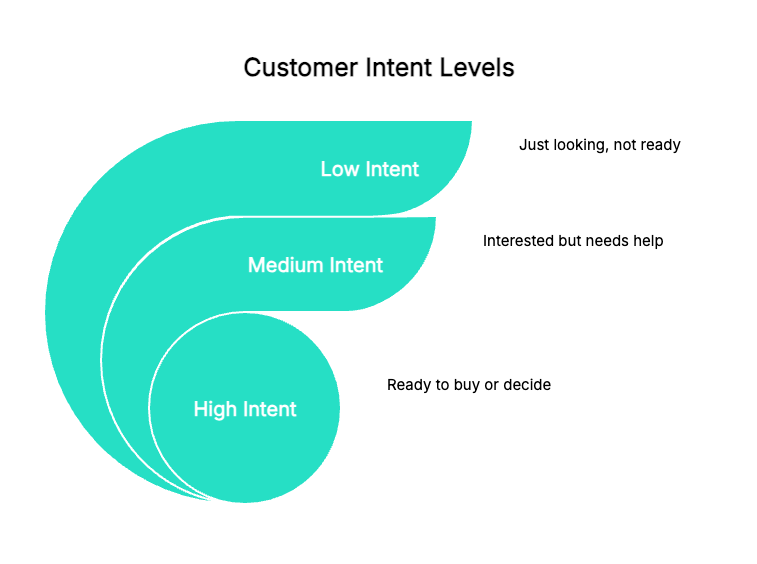Most personalization efforts don’t fail because the tools are broken.
They fail because the personalization strategy is based on demographics, not user intent.
We segment by age, gender, source, even past purchases—but rarely ask the most important question:
“What is this visitor trying to do right now?”
That’s intent. And once you start designing for it, everything changes.
In this guide, I’ll walk through how my team moved from demographic-led assumptions to intent-driven decision-making—and how that shift drove more than $45M in incremental revenue.
No CDP. No magic. Just behavior, context, and ruthless testing.
Why Most Personalization Strategies Fail Without User Intent?
Let’s call it out:
- They personalize for everyone, even when it adds no value.
- They rely on identity—age, location, persona decks from 2019.
- They assume more personalization = better results.
- They don’t test the segment. Just the message.
What you end up with is clutter. Mismatched experiences. Waste.
Intent fixes that—not by doing more, but by doing what matters in the moment.
Step 1: Start With Behavior, Not Identity
If someone’s viewed five PDPs in the same category, they’re probably comparing options.
If they landed from Instagram, hit one page, and bounce—they were curious, not committed.

Here’s how we break it down:
| Intent Level | Behavior Patterns | How to Interpret |
|---|---|---|
| Low | PLP-only jumps between categories, bounces fast | Just looking, not ready |
| Medium | Multiple PDPs, filter usage, time on site | Interested but needs help |
| High | Cart returns, repeat sessions, focused path | Ready to buy or decide |
And product intent matters too. Engagement ring vs. charm bracelet? Totally different journeys—even if both users are “high intent.”
Pro tip: One metric never tells the full story. It’s the pattern that reveals purpose.
Step 2: Don’t Personalize Until You Test the Segment
Here’s where most brands trip up: they jump straight from idea to rollout.
What we do instead is test the segment first.
We run a control with default content and compare it to a version shown only to a specific intent group.
Example:
We tested urgency copy on a homepage. Aggregate lift? Neutral.
But broken down by intent:
- High intent: +12% CTR to cart
- Low intent: -6% engagement
Without that segmentation, we would’ve called the test a wash.
Insight: Don’t assume a message is good or bad. Ask: for whom?
Step 3: Build Experiences That Match the Moment
Intent isn’t just about what to say—it’s about when and to whom you say it.
To truly improve relevance, your personalization strategy based on user intent must go beyond static segments and respond to real-time behaviors.
| Element | Low Intent | High Intent |
|---|---|---|
| Homepage Hero | “Explore Bestsellers” | “Ready to Pick Up Where You Left Off?” |
| Product Recs | Gift guides, new arrivals | Recently viewed, cart-based |
| PLP | Layout Filter help, navigation nudges | Auto-filtered PLPs, urgency cues |
Same creative? Fine. Same copy? Lazy.
Get smarter by aligning message to mission. That’s how you reduce friction instead of adding noise.
Step 4: Use Intent to Make Testing Smarter
Intent doesn’t just power personalization—it makes your A/B tests more accurate.
Too many teams look at aggregate test results and make the wrong call. A test might underperform overall but crush it for a specific segment.
We tested a redesigned PLP.
Aggregate lift = 0.
But for medium-intent users? +14% conversion rate.
For high-intent? It hurt conversion.
That’s a signal—not a failure. We split the experience. Both segments won.
According to McKinsey’s personalization research, brands that excel at personalization can drive 40% more revenue than their peers.
What Happens When Personalization Misses the Mark?
It’s not always the segment. It’s often the mismatch between message and mindset.
Here are the most common fails we’ve seen (and sometimes made):
| Mistake | Why It Backfires |
|---|---|
| Pushing upsells too early (or at all) | Creates decision fatigue |
| Showing urgency to low intent | Feels aggressive, causes drop-off |
| Offering education to high intent | Feels like a delay or stall tactic |
Real story:
We ran a “complete the look” carousel under PDPs.
It tanked for high-intent visitors. They didn’t want help picking earrings. They were here to decide on a ring. Adding more options just slowed them down.
Lesson: relevance isn’t about adding, it’s about knowing what not to show.
What to Track (By Intent Level)
Low Intent:
- Time on site
- Pages per session
- Bounce rate
Medium Intent:
- PDP engagement
- Add to cart
- Return rate
High Intent:
- Checkout progression
- AOV
- Conversion rate
Measure what makes sense for the journey they’re on—not just what makes sense to your funnel.
So What Should You Do Now?
Start small.
- Build basic intent segments using page behavior.
- Run a test with one segment—don’t assume it outperforms, prove it.
- Tailor just the copy before redesigning everything.
- Track the right KPIs for each tier.
- Keep what works. Kill what doesn’t. And keep iterating.
Want to Go Deeper?
- 🎯 Download the full Intent Wins Playbook — 6 sections packed with real test results and frameworks
- 💼 Work with me — I help eCommerce teams turn behavioral data into revenue-driving personalization strategies
- 🔎 Read: Why Personalization Backfires (and What to Do About It)
Final Thought
Intent isn’t a segment. It’s a strategy. A personalization strategy based on user intent, not assumptions.
It helps you stop guessing what to show and start aligning your experience to what people actually came to do.
And once you do that?
Everything—engagement, AOV, conversion—gets easier.
